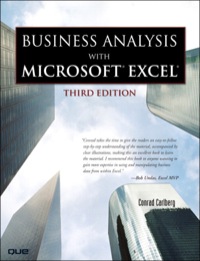Answered step by step
Verified Expert Solution
Question
1 Approved Answer
Please select the option that best analyzes the RETURN ON EQUITY for our example company. Group of answer choices A.Return on equity tells us how
Please select the option that best analyzes the RETURN ON EQUITY for our example company.
Group of answer choices
A.Return on equity tells us how well we have used our owners' investments to provide a return on their investment. Our investors require a return of 5%, and they are content as the example company provided a return EQUAL to their expected return.
B.Return on equity tells us how well we have used our owners' investments to provide a return on their investment. Our investors require a return of 5%, so they would accept the return on equity for the year, since it is LESS than their return they accept to earn.
C.Return on equity tells us how well we have used our owners' investments to provide a return on their investment. Our investors require a return of 5%, so they would accept the return on equity for the year.
D.Return on equity tells us how well we have used our owners' investments to provide a return on their investment. Our investors require a return of 5%, so they would NOT ACCEPT the return on equity for the year. since it it much lower than the required 5% return they expect to earn.


Step by Step Solution
There are 3 Steps involved in it
Step: 1

Get Instant Access to Expert-Tailored Solutions
See step-by-step solutions with expert insights and AI powered tools for academic success
Step: 2

Step: 3

Ace Your Homework with AI
Get the answers you need in no time with our AI-driven, step-by-step assistance
Get Started


